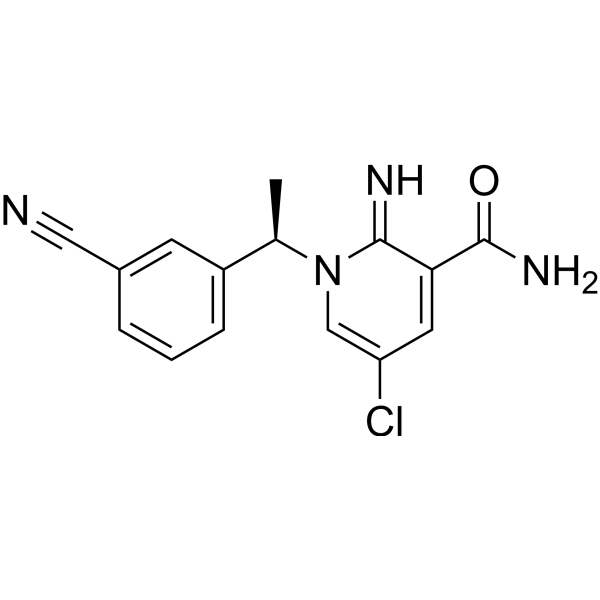ADRA1D receptor antagonist 1 free base
Modify Date: 2024-02-08 18:39:13

ADRA1D receptor antagonist 1 free base structure
|
Common Name | ADRA1D receptor antagonist 1 free base | ||
|---|---|---|---|---|
| CAS Number | 1191908-24-3 | Molecular Weight | 300.74 | |
| Density | N/A | Boiling Point | N/A | |
| Molecular Formula | C15H13ClN4O | Melting Point | N/A | |
| MSDS | N/A | Flash Point | N/A | |
Use of ADRA1D receptor antagonist 1 free baseADRA1D receptor antagonist 1 (free base) (compound (R)-9s) is an orally active, potent and selective human α1D-adrenoceptor (α1D-AR) antagonist (Ki=1.6 nM). ADRA1D receptor antagonist 1 (free base) dose-dependently inhibits bladder contraction with an IC30 value of 15 nM. ADRA1D receptor antagonist 1 (free base) can be used in studies of overactive bladder disorders such as urinary urgency, frequency and incontinence. |
| Name | ADRA1D receptor antagonist 1 free base |
|---|
| Description | ADRA1D receptor antagonist 1 (free base) (compound (R)-9s) is an orally active, potent and selective human α1D-adrenoceptor (α1D-AR) antagonist (Ki=1.6 nM). ADRA1D receptor antagonist 1 (free base) dose-dependently inhibits bladder contraction with an IC30 value of 15 nM. ADRA1D receptor antagonist 1 (free base) can be used in studies of overactive bladder disorders such as urinary urgency, frequency and incontinence. |
|---|---|
| Related Catalog | |
| In Vivo | ADRA1D receptor antagonist 1 (free base) (10 µg/kg; p.o.; single) inhibits cyclophosphamide-induced urinary frequency in rats[1]. ADRA1D receptor antagonist 1 (free base) (4.4 µg/kg; i.v.; single) inhibits bladder contraction with an IC 30 value of 15 nM in rats[1]. Animal Model: Rats with cyclophosphamide-induced cystitis[1]. Dosage: 10 µg/kg Administration: Oral administration; single Result: Increased voiding intervals. Animal Model: Rats with BOO (bladder outlet obstruction)[1]. Dosage: 4.4 µg/kg Administration: Intravenous injection; single Result: Dose-dependently decreased the non-voiding bladder contractions during urinary storage phase. |
| Molecular Formula | C15H13ClN4O |
|---|---|
| Molecular Weight | 300.74 |